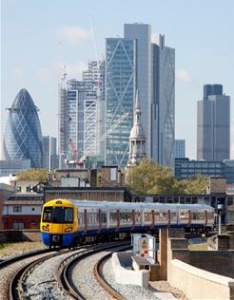New approach to rail planning seeks to boost economic growth

The first step towards a new map for the future of Britain’s railway has been taken today with the launch of the Long Distance Market Study.
This document is the first in a new style of research designed to look 10 to 30 years into the future. Open to consultation from today, the final version will help form the basis of where long distance rail travel will go in control period 6 (2019-24) and beyond.
Richard Eccles, Network Rail’s head of strategic planning, said: “The goals of our study are to identify where rail can have the biggest effect on three key areas - namely enabling economic growth, improving people’s quality of life and reducing the impact of travel on the environment.
“Rail has a unique ability to offer fast and efficient connectivity for businesses and communities, while also being a greener, less carbon hungry form of travel. Only by planning many years ahead will we be able to keep trains moving and meet demand.”
As a market study, the document will not provide solutions (that will be the focus of the route studies that follow) but it will provide a guide to what capacity will be needed.
ADVERTISEMENT
Similarly, it is not limited by how well cities are linked by rail – or even if they are at all – but predicts the demand for travel between them; ranging from high speed (160mph average) down to existing interurban travel (45mph).
If those cities are not connected with fast rail links, it will be the job of the route study to show how that challenge could be met.
As an example, should the economy grow reasonably by 2043, travel between Leicester and Manchester – not directly connected by rail – could grow by 203 per cent. If the economy stagnates, it would still be 70 per cent. The estimates for 2023 (end of CP6) are 27 to 32 per cent respectively.
In the case of Manchester and London, travel can be expected to grow by 143 per cent. If the economy remains stagnant, it could be as low as 85 per cent. The figures for 2023 are 46 to 31 per cent.
It is assumed in all cases that HS2 has been, or is being, built.

